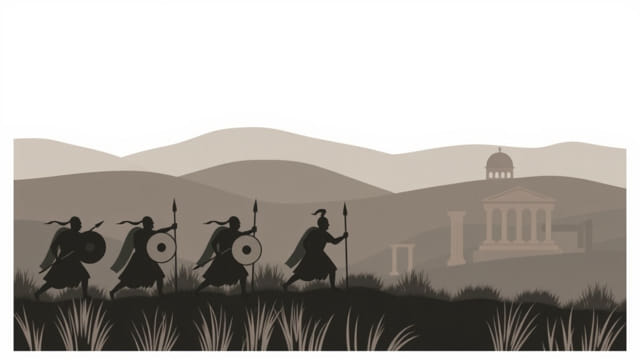As the Western Roman Empire began to crumble in the late fourth and early fifth centuries, a number of migratory tribes pushed into Roman territory. Among these were the Visigoths, a Germanic people whose movement would dramatically alter the history of Europe. One of their most significant accomplishments was the establishment of a kingdom in what is now modern Spain. The Visigothic invasion of the Iberian Peninsula was not a single sudden assault, but a gradual process influenced by shifting alliances, imperial politics, and internal pressures. Understanding whether the Visigoths invaded Spain requires a look at their origins, their journey through Roman lands, and how they ultimately came to dominate the region.
Origins of the Visigoths
Who Were the Visigoths?
The Visigoths were one branch of the larger Gothic people, originally hailing from regions around the Black Sea. By the late third century CE, they had begun migrating toward the borders of the Roman Empire due to pressure from other nomadic groups, most notably the Huns. The Visigoths distinguished themselves from their relatives, the Ostrogoths, by moving westward and coming into more direct contact with the Roman Empire.
These early encounters with Rome were both violent and cooperative. The Visigoths fought against the Empire, but they also served as federates semi-independent allies under Roman command. Over time, the Visigoths became both a threat to and a tool for the weakening Western Roman Empire.
Visigothic Movement Through the Roman Empire
The Sack of Rome and Its Aftermath
In 410 CE, the Visigoths, led by King Alaric I, famously sacked the city of Rome. This shocking event marked a turning point in European history and demonstrated the vulnerability of the once-mighty Roman state. Although the Visigoths did not remain in Italy permanently, their power and influence grew after this dramatic event.
Following the sack, the Visigoths wandered through southern Gaul (modern-day France) and eventually settled there as federates. By the mid-fifth century, under King Theodoric I, they established the Visigothic Kingdom centered in Toulouse. It is from this base that they later expanded into the Iberian Peninsula.
Entry into Hispania
Roman Weakness and Visigothic Opportunity
The Western Roman Empire continued to fragment during the fifth century, and various barbarian tribes took advantage of the disorder. Vandals, Suebi, and Alans had already invaded and established kingdoms in parts of Hispania (Spain and Portugal). The Romans, struggling to regain control, invited the Visigoths to aid in expelling these other groups.
This invitation was less an official alliance and more a desperate strategy by Rome. Around 415 CE, Visigothic forces began campaigns in Hispania to defeat the Vandals and Alans. These operations were partially successful, and the Visigoths remained in the region afterward. They were no longer just guests or allies they were now settlers and rulers.
Consolidation of Visigothic Rule
By the late fifth century, the Visigoths had established a firm foothold in northern Hispania. Their expansion into the rest of the peninsula accelerated under King Euric (r. 466484), who declared full independence from Rome and conquered much of the Iberian interior. The power vacuum left by collapsing Roman administration made it relatively easy for the Visigoths to expand.
Eventually, the capital of the Visigothic Kingdom was moved to Toledo, signifying their commitment to ruling Hispania. From this point onward, Spain became the center of Visigothic power and culture.
Visigothic Kingdom in Spain
Establishment of a New Order
Though they had arrived as invaders and outsiders, the Visigoths gradually adapted to life in Hispania. They adopted many aspects of Roman governance, law, and infrastructure. Latin remained the dominant language, and Roman Catholicism eventually became the state religion, though not without internal conflict.
Visigothic kings such as Leovigild and Reccared played critical roles in unifying the kingdom and consolidating power. Reccared’s conversion from Arianism to Catholicism in 589 CE was a particularly important moment, helping to bridge the gap between the Visigothic elite and the Hispano-Roman population.
- Leovigild (r. 568586): Expanded Visigothic territory and strengthened central authority.
- Reccared I (r. 586601): Converted to Catholicism and aligned the Visigoths with the Roman Church.
- Chindaswinth and Recceswinth: Continued codifying Visigothic law with theLex Visigothorum.
Social and Legal Integration
The Visigoths sought to merge their identity with that of the Romanized population. One major achievement was the compilation of the Visigothic Code, orLiber Judiciorum, a unified legal code blending Roman and Germanic law. This helped stabilize the kingdom and fostered a sense of unity across ethnic lines.
Impact on the Iberian Peninsula
Cultural and Religious Influence
The Visigoths left a lasting imprint on Spanish history. Although they initially followed Arian Christianity, their later embrace of Roman Catholicism brought them into alignment with broader European traditions. They also preserved many Roman customs, serving as a bridge between antiquity and the Middle Ages.
Architectural remnants, such as churches and tombs, as well as literary and legal traditions, reflect their contribution to the cultural fabric of early medieval Spain.
Fall of the Visigothic Kingdom
Despite their successes, the Visigoths struggled with internal strife and external threats. In 711 CE, Muslim armies from North Africa invaded the Iberian Peninsula and decisively defeated the Visigothic forces at the Battle of Guadalete. The kingdom rapidly collapsed, and Islamic rule began in much of Spain, though some Christian resistance continued in the north.
The legacy of the Visigoths, however, endured. They had created one of the first post-Roman states in Western Europe and helped shape the political, cultural, and religious identity of early medieval Spain.
So, did the Visigoths invade Spain? The answer is yes but with important nuances. Their entry into the Iberian Peninsula was initially facilitated by Roman strategy, but they soon transitioned from allies to conquerors to sovereign rulers. The Visigoths did not simply pass through Hispania; they transformed it, laying foundations that would influence the region for centuries. Their kingdom was one of the earliest examples of a post-Roman European state, and its impact can still be seen in Spanish legal, religious, and cultural traditions today.
